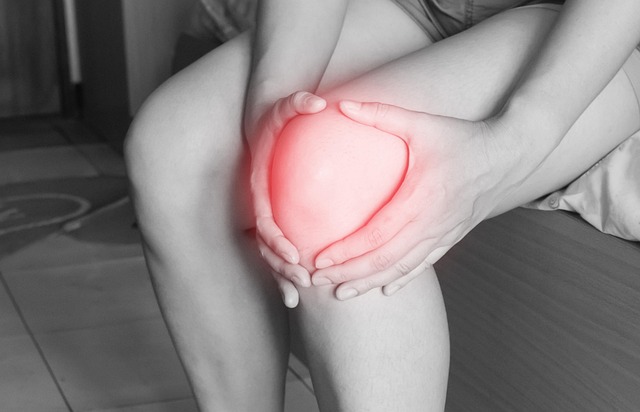Corticosteroid injections provide targeted joint pain relief for conditions like arthritis and bursitis, quickly reducing inflammation and immuno responses. Though effective, potential risks include temporary weakness, infection, tissue atrophy, and bone density loss. For lasting relief, physical therapy and alternative treatments complement corticosteroids to improve mobility and quality of life.
“Experience lasting hip joint pain relief with corticosteroid injections—a powerful tool in managing chronic conditions. This comprehensive guide delves into the effectiveness of these injections, explaining how they reduce inflammation and alleviate discomfort. We explore their benefits and potential risks, offering insights for informed decisions. Additionally, discover alternative methods for persistent hip discomfort, ensuring a well-rounded approach to your treatment journey. Find out how corticosteroids can provide relief and improve your quality of life.”
Understanding Corticosteroid Injections for Hip Pain
Corticosteroid injections have emerged as a powerful tool in the arsenal for managing hip joint pain. These injections, directly administered into the affected area, offer significant relief by reducing inflammation and suppressing painful responses from the immune system. Understanding how they work is crucial when considering them as a treatment option.
For individuals suffering from conditions like arthritis or bursitis, which often cause chronic hip joint pain, corticosteroids can provide fast-acting and effective symptom management. The injections are typically performed under imaging guidance to ensure precise placement, maximizing the therapeutic benefits while minimizing potential side effects. This targeted approach makes corticosteroid injections an attractive solution for those seeking joint pain relief with minimal invasiveness.
How These Injections Work for Joint Relief
Corticosteroid injections have proven effective in providing significant joint pain relief for individuals suffering from hip inflammation and arthritis. These powerful anti-inflammatory medications work by reducing the presence of chemicals in the body that cause pain, swelling, and stiffness in the affected area. When injected directly into the hip joint, corticosteroids can quickly reduce irritation, allowing for improved mobility and comfort.
The process involves a medical professional inserting a thin needle into the hip joint, carefully administering the corticosteroid medication. This targeted approach ensures minimal invasion while maximizing the benefits of the injection. The relief offered by these injections is often temporary but valuable, giving patients the chance to manage their symptoms and improve their quality of life before considering other long-term treatment options for sustained joint pain relief with corticosteroids.
Benefits and Risks of This Treatment Approach
Corticosteroid injections offer a targeted approach to managing hip joint pain, providing significant relief for many patients. The primary benefit lies in their ability to reduce inflammation and suppress the immune response, which can be particularly effective in conditions like arthritis or bursitis. By delivering medication directly into the affected area, corticosteroids can offer fast-acting symptom relief, allowing individuals to regain mobility and alleviate discomfort.
However, as with any treatment, there are potential risks associated with corticosteroid injections. Side effects may include temporary joint weakness, increased infection risk at the injection site, and in rare cases, tissue atrophy. Long-term use or repeated injections can also lead to bone density loss and reduced joint cartilage. It’s crucial for patients to be aware of these possibilities and to discuss them openly with their healthcare provider before undergoing this treatment for joint pain relief with corticosteroids.
Alternative Methods for Persistent Hip Discomfort
For individuals experiencing persistent hip discomfort, exploring alternative treatment options beyond conventional methods is essential for achieving lasting joint pain relief with corticosteroids. While physical therapy and lifestyle adjustments play a significant role in managing hip pain, some patients may require additional interventions to find substantial relief. This is especially true for conditions such as arthritis or avascular necrosis, where conservative treatments might not provide sufficient long-term benefits.
Corticosteroid injections emerge as a powerful tool in the medical arsenal for alleviating joint pain. These injections directly target the affected area, offering swift and effective relief by reducing inflammation and numbing the nerve endings responsible for sending pain signals to the brain. By providing targeted therapy, corticosteroid injections can significantly improve mobility and quality of life for patients grappling with persistent hip joint pain.
Corticosteroid injections offer a quick and effective solution for severe hip joint pain, providing significant relief for many individuals. However, it’s essential to weigh the benefits against potential risks, as this treatment may not be suitable for everyone. If conservative methods fail, exploring alternative therapies is crucial for managing persistent hip discomfort. Understanding these options empowers patients to make informed decisions about their long-term joint health and overall well-being.
